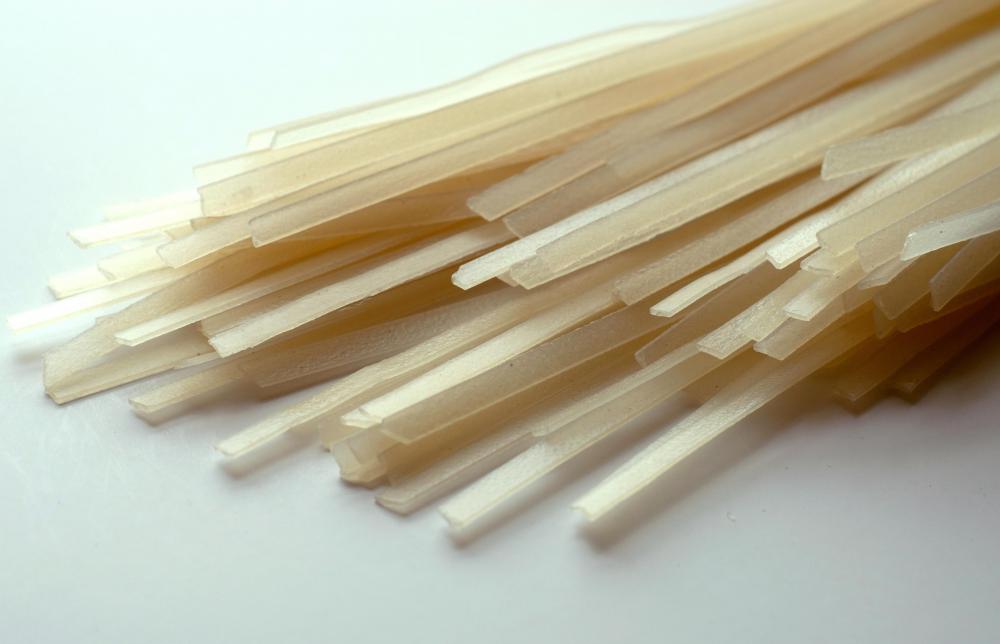At WiseGEEK, we're committed to delivering accurate, trustworthy information. Our expert-authored content is rigorously fact-checked and sourced from credible authorities. Discover how we uphold the highest standards in providing you with reliable knowledge.
How Do I Choose the Best Rice Stick Noodles?
Rice stick noodles are thin, dried Asian noodles made of rice flour. They are also known as rice sticks, rice vermicelli, mai fun, mifen, kway teow, rice flour noodles, bun, and pancit bihon, among several other names. Choosing the best rice stick noodles is mainly a matter of checking out their color and how many of them appear to be broken. Additional factors are how many servings you want to make at one time, plus whether you’ve tried regular rice from the same manufacturer.
The noodles should be in relatively good condition. While a little breakage is expected in any pack of noodles, the majority of the rice stick noodles should be unbroken. If a lot of the noodles are broken in half or in several places, it’s an indication something crushed or fell on the package in shipping. Inspect bags like these to ensure the seal isn’t broken. If it is, dirt and bugs may have gotten inside.

The color of the noodles should be white to off-white, and the wider noodles will be a tiny bit translucent. You won’t be able to see through them, but they will not appear completely opaque like wheat noodles. The noodles should have a uniform color without spots or different shades on the same bunch of noodles. Avoid rice sticks made by brands whose rice you don’t like. Chances are their rice noodles will not taste good to you, either.

Rice stick noodles are available in different widths ranging from thin, round strands to flatter, wider strips. The noodles are typically available in bunches in which the noodles are entwined and difficult to separate from each other, although some markets sell straightened, cut rice stick noodles that are arranged more like spaghetti. These are easier for one person to separate into individual servings because the bunched noodles can be hard to divide without causing bits to break off and scatter.

Keep the semi-tangled nature of most rice stick noodles in mind when you buy some. If you are buying food for only yourself, the separated noodles may be a better choice. Even though they are shorter overall than the traditional bundled noodles, you will not have to deal with untangling and neatly breaking the bundles in order to get a single serving. Obviously this will not be an issue if you are cooking for a large group of people and planning to use the entire package at once.
Rice stick noodles look very similar to cellophane noodles, which are made from mung beans. They also look a lot like harusame, which is a type of Japanese noodle made from vegetable starches such as sweet potato. The cooked end product will be different from rice stick noodles, however, so double-check the name of the item on the package.
AS FEATURED ON:
AS FEATURED ON:













Discuss this Article
Post your comments